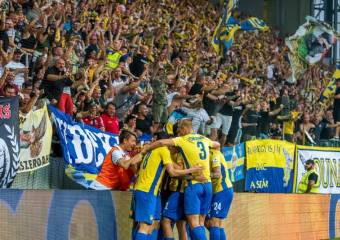The old Hungarian name is the month of St. Andrew.
On the first day of November, the (roman catholic) Church celebrates Saints who have no assigned date in the calendar. On the afternoon of All Saints’ - just as it is today - , cemeteries were full of relatives decorating the graves, and in the evening many more joined to light candles for the spiritual salvation of the dead. The light of the candles burning on the tombs symbolizes eternal light.
The next day, on the 2nd, is the Day of the Dead (All Souls’s Day), the time of remembrance for souls suffering in purgatory. Many prohibitive customs are associated with this day. It was forbidden to wash, whitewash or plant garlic during the week of the holiday. Along the Upper Danube, it was believed that dead members of the family would visit their former home during the week of the dead, so a major clean-up was held this week.
November 11 is Márton (St. Martin's Day). This day was a rental fee and payroll due date already as early as the Árpád era, and it was also a time shepherds to perform natural magic. Shepherds gave a bunch of canes as gifts that day to the farmers whose cattle they were grazing. This beam was named the cane of St. Martin, to which a protective role was attributed.
November 25 is the feast of Katalin (St. Catherine the Martyr). Catherine's Day is both a weather forecast day and a love magic day. Her feast is followed by Advent, when neither a wedding nor a dance is allowed. In some places, bachelors fasted all day to dream of who their wife would be. Girls however, placed orchard twigs in water, and if the branches of these fruit trees bloomed, the girl would urely get married the following year. The people of Rye Island also observed the weather, they said if "Katalin knocks, Christmas will be sloppy".
November 30 is the feast of St. Andrew. Andrew's Day is also a time of love fortune telling. Girls fasted all day, and for the night they put some piece of men's clothing under their head to find out in their sleep who their husband would be.
In the villages along the Danube, where once watermills were operating, the millers paid special attention to Andrew's Day. "András, look homeward," said the warning, meaning that by the time the approaching frost has reached the river, all floating mills had to be towed to the bank of the Danube, to the safe harbor.
Andrew's Day is a turning point in the calendar. The Sunday following it is the beginning of the new liturgic year, the first Sunday of Advent. Advent means the Lord is approaching, and comes from the Latin word ‘adventus’. In Catholic villages, the Friday of Advent was considered a strict fast, meat and fatty food were not consumed at all. The congregation attended early morning Rorate masses, every day except Sunday.


















































